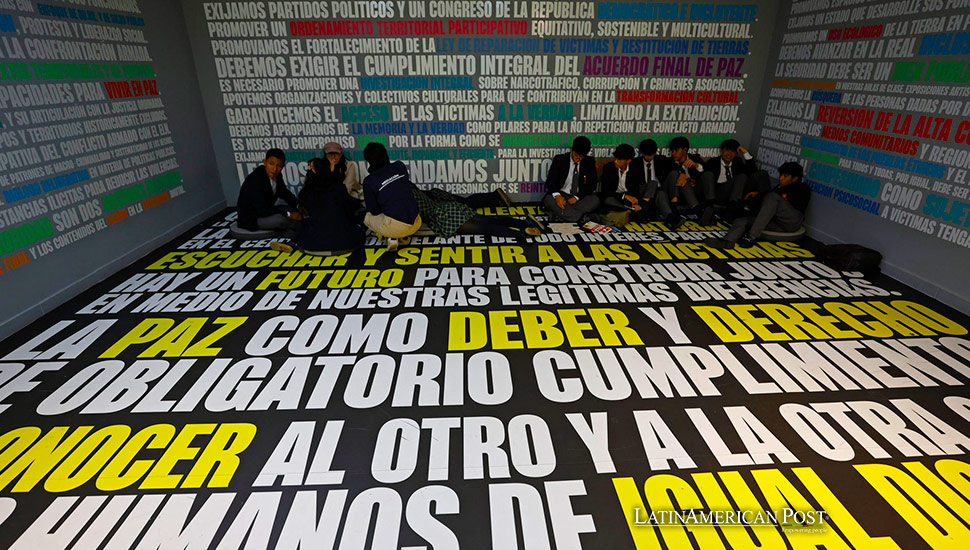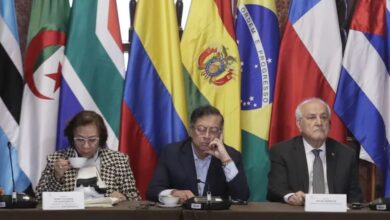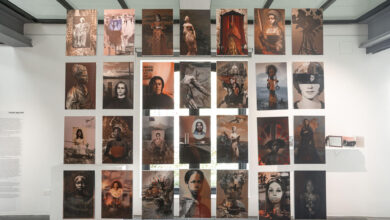Colombia’s Journey to Peace through “There Is a Future If There Is Truth” Exhibition

A powerful exhibition at Bogotá’s Center for Memory, Peace, and Reconciliation delves into Colombia’s violent history. The Truth Commission’s findings help pave the way for a peaceful future. The interactive exhibit, open until December, invites visitors to understand and reflect on six decades of armed conflict.
“Those who do not learn from history are condemned to repeat it.” This well-known adage underscores the necessity of understanding past mistakes to avoid repeating them. In Colombia, this principle is tangible in the exhibition “There Is a Future If There Is Truth,” which meticulously chronicles the country’s armed conflict and its impact. Hosted at the Center for Memory, Peace, and Reconciliation in Bogotá, the exhibit is designed to educate and engage the public, drawing on the extensive work of the Truth Commission established after the 2016 peace agreement.
The exhibition, which began in February and runs until December, showcases the Truth Commission’s findings, aiming to provide a comprehensive understanding of what transpired during the 60 years of conflict. The two-hour tour captivates and moves its visitors through music, photographs, and interactive displays, drawing over 13,000 people in the first three months alone.
Paula Velásquez, the exhibition’s communications coordinator, notes that the display profoundly impacts many visitors. “People often leave very moved after their first visit, and those particularly interested in the subject tend to return and explore different aspects of the exhibit each time,” she told EFE.
The Toll of War and the Search for Truth
The walls of the exhibition echo the cries and dreams of a nation ravaged by violence. According to the Truth Commission, the conflict claimed approximately 450,000 lives between 1985 and 2018. This figure could potentially double when considering unreported cases. The commission recorded 8,775,884 victims of various forms over 33 years, a staggering testament to the conflict’s pervasive impact.
The exhibition is organized into six segments, each detailing different facets of the war, its consequences, and the resilience of civil society. It includes testimonies from guerrilla fighters, ex-military personnel, and commanders, alongside heart-wrenching accounts from women who tirelessly searched for their loved ones, victims of the so-called ‘false positives’—civilians executed by the military and falsely reported as combat kills. Velásquez emphasizes that the aim is to “tell the whole truth, not just the perspective of a few.”
A Vibrant and Somber Experience
Visitors are greeted by a rainbow of ten colored lines, each representing a key finding of the commission. These lines guide them through four historical periods, illustrating how different eras of the conflict impacted the country. Themes such as human rights violations, drug trafficking, impunity, and the interplay between culture and conflict are prominently featured.
The exhibition’s historical context is crucial. Colombia’s armed conflict involved various factions, including government forces, paramilitary groups, and guerrilla organizations like the FARC. Rooted in deep socio-economic inequalities, the conflict saw atrocities committed by all sides, leaving a legacy of pain and a pressing need for reconciliation.
The Role of the Truth Commission
Established as part of the 2016 peace agreement between the Colombian government and the FARC, the Truth Commission was tasked with reconstructing the memory of the armed conflict. Last year, the commission presented its final report, a detailed 11,000-page document that forms the basis of the exhibition. This comprehensive account highlights the conflict’s origins, regional manifestations, and enduring impact on Colombian society.
Velásquez reflects on the enormity of the task: “The exhibition is a summary of 11,000 pages, and even then, many things were left out.” The original plan was to permanently house the exhibit in the Museum of Memory of Colombia, but the building project was incomplete.
A poignant element of the exhibition is a symbolic moment of silence. Velásquez shares that if Colombians were to observe one minute of silence for each victim of the armed conflict, it would amount to 17 years of silence. To honor this, student groups visiting the exhibit are asked to observe 17 seconds of silence, offering a brief but powerful tribute to those lost.
Educational and Reflective Objectives
The exhibition aims to educate and promote reflection and healing. It encapsulates the commission’s recommendations for non-repetition, stressing the importance of understanding and addressing the root causes of conflict to prevent future violence. By engaging with these themes, visitors can appreciate the complex history and the need for a collective effort toward peace.
“There Is a Future If There Is Truth” is more than an exhibition; it is a call to action for Colombia. It urges the nation to learn from its past to build a more peaceful and just future. As the country continues to navigate the challenges of post-conflict reconstruction, the lessons from this exhibit will be invaluable.
Also read: Colombian Biologist Wins National Geographic Explorer of the Year Award Saving Dolphins
By bringing the findings of the Truth Commission to the public, the exhibition fosters a deeper understanding of Colombia’s tumultuous history and the ongoing efforts toward reconciliation and peace. Through education and reflection, it seeks to ensure that past horrors are not repeated, paving the way for a brighter, more harmonious future for all Colombians.




